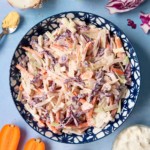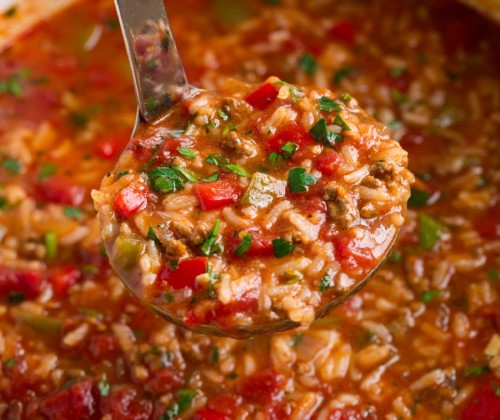This creamy coleslaw is made without mayo! It’s packed with crunchy fresh veg and best of all, it’s super easy to make.
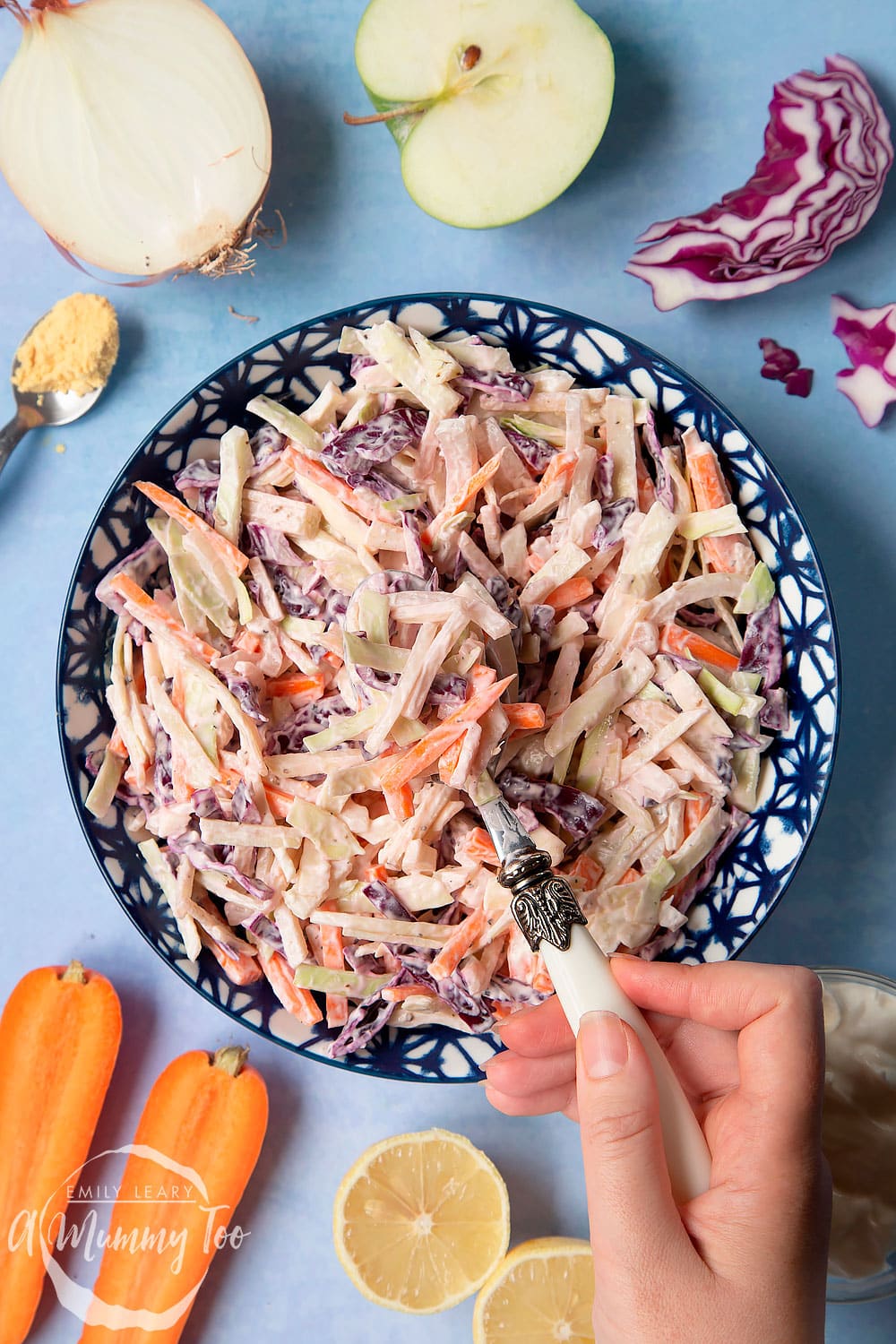
In this recipe, carrot, cabbage, onion and apple is shredded, then tossed in low-fat crème fraîche flavoured with mustard and fennel seeds.
You could serve this crunchy, fresh, delicious, low fat and low calorie coleslaw with all sorts of dishes, from summer barbeques to chicken dinners.
Here’s how to make it – it’s a breeze!
Ingredients
- 100 g (3.5 oz) white cabbage sliced
- 100 g (3.5 oz) red cabbage sliced
- 1 carrot cut into thin batons
- 1/4 onion peeled and sliced
- 1/2 apple peeled, cored and cut into thin batons
- 125 g (4.4 oz) low fat crème fraîche
- 1/2 tsp English mustard
- 1/2 tsp fennel seeds
- 1/2 lemon juice
- 1 pinch salt and pepper to taste
Equipment
Instructions
Put the red cabbage, white cabbage, carrot, onion and apple in a mixing bowl.

Add the crème fraîche, mustard and fennel seeds.
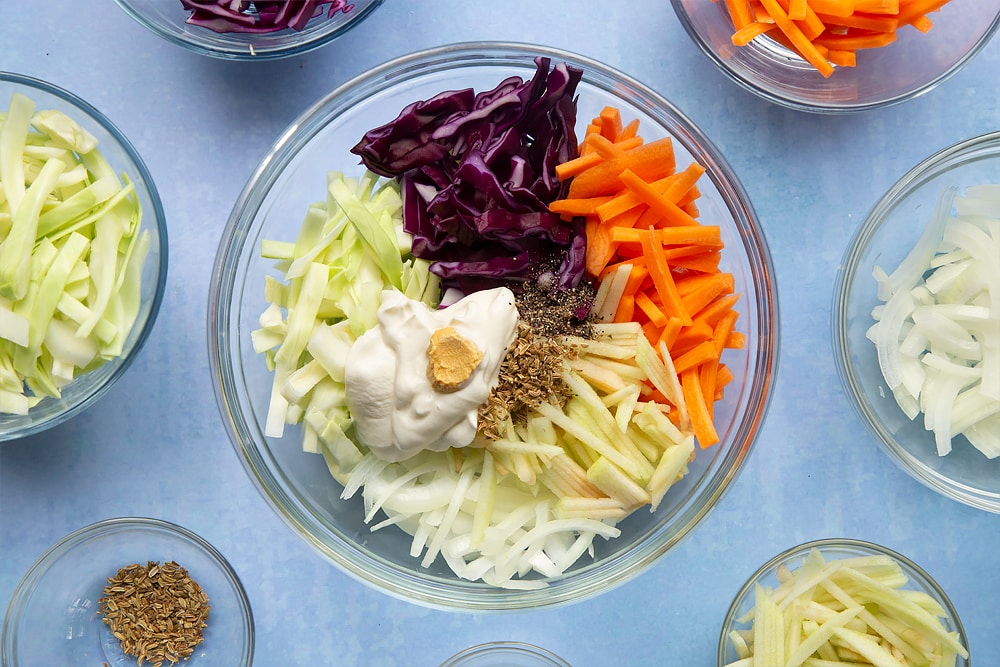
Mix well.

Add the lemon juice.
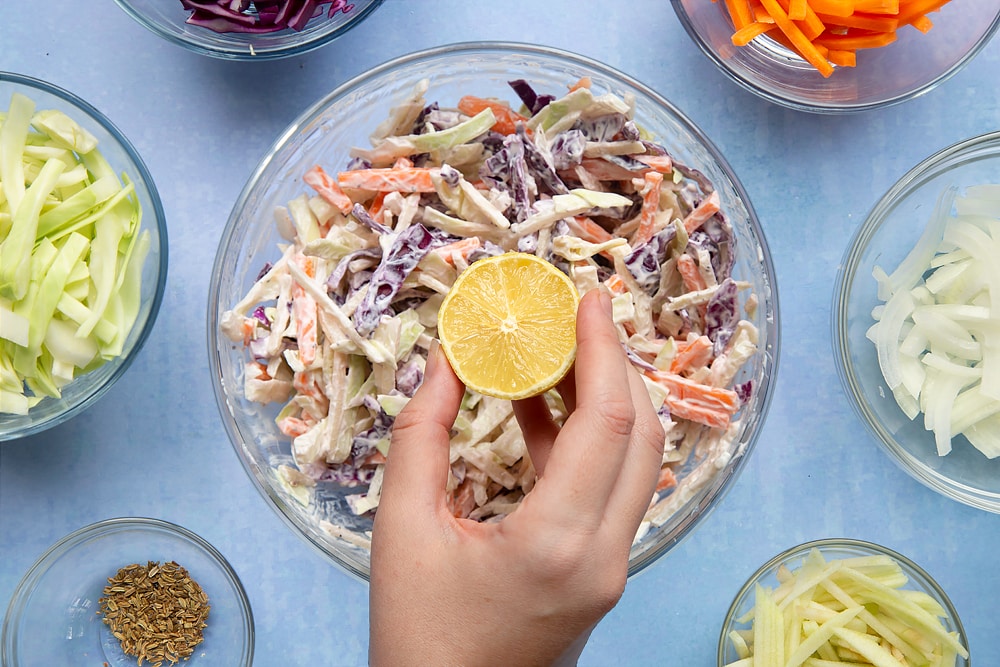
Mix well. Season to taste with salt and pepper.
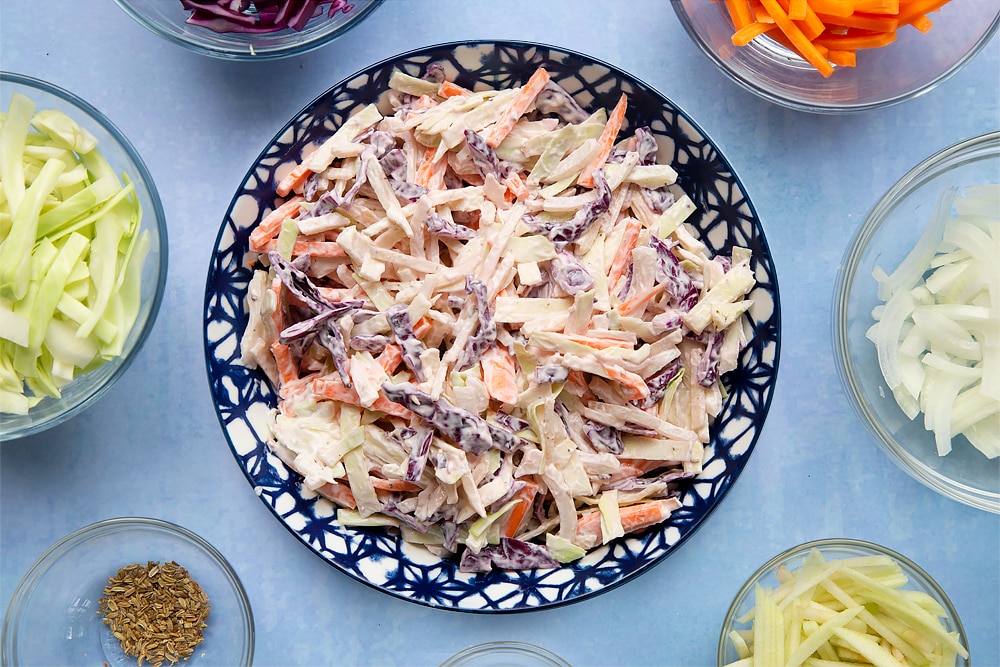
Enjoy!
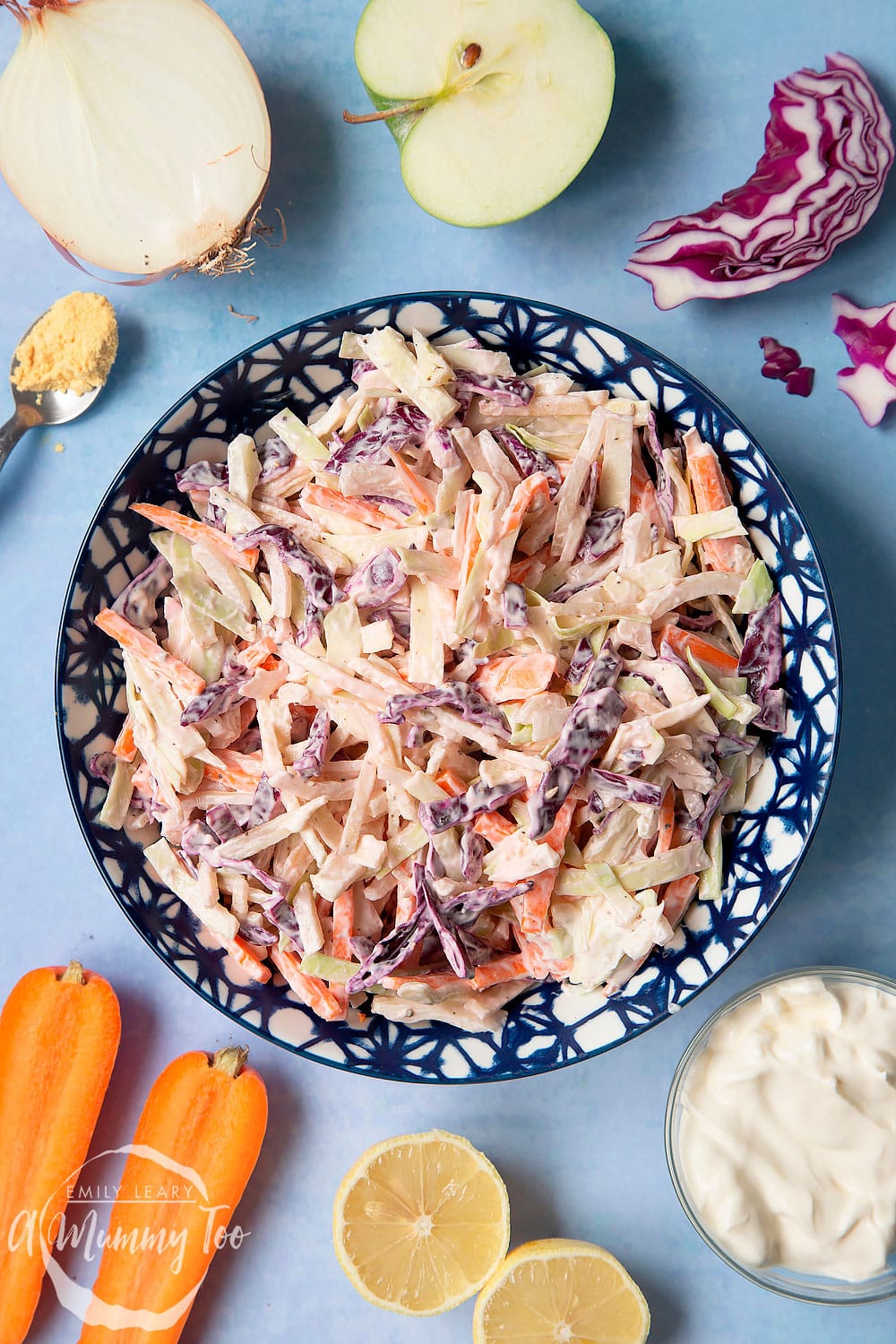
More tips for the perfect creamy coleslaw without mayo
Is coleslaw easy to make?
This recipe is really easy to make, requiring just vegetables, low-fat crème fraîche, mustard, fennel and lemon juice to make a big bowl of creamy, crunchy salad.
Will I need any special equipment for this recipe?
You won’t need any special equipment to make this recipe, although a good sharp knife will help speed up the process of chopping the veg.
Where can I buy fennel seeds?
You should be able to get fennel seeds quite easily in the spice section of your supermarket.
You won’t need the whole bottle for the recipe, but fennel seeds are delicious in curries, particularly with pork, so you won’t regret buying them.
Is this coleslaw without mayo suitable for vegetarians?
Yes, this recipe is suitable for vegetarians. Check your low-fat crème fraîche packaging to be extra-sure, but there shouldn’t be any issues.
Is this coleslaw without mayo suitable for vegans?
As this recipe contains crème fraîche, it is not suitable for vegans. However, that is the only non-vegan ingredient, so if you replace it with a vegan mayo, vegan cream or vegan cream cheese, it will be suitable for a vegan diet.
Is this coleslaw without mayo gluten-free?
This recipe is suitable for a gluten-free diet.
It doesn’t contain any ingredients that contain gluten. However, you should check the packaging of individual ingredients to make sure they are gluten-free and/or suitable for coeliacs.
Is this creamy coleslaw without mayo healthy?
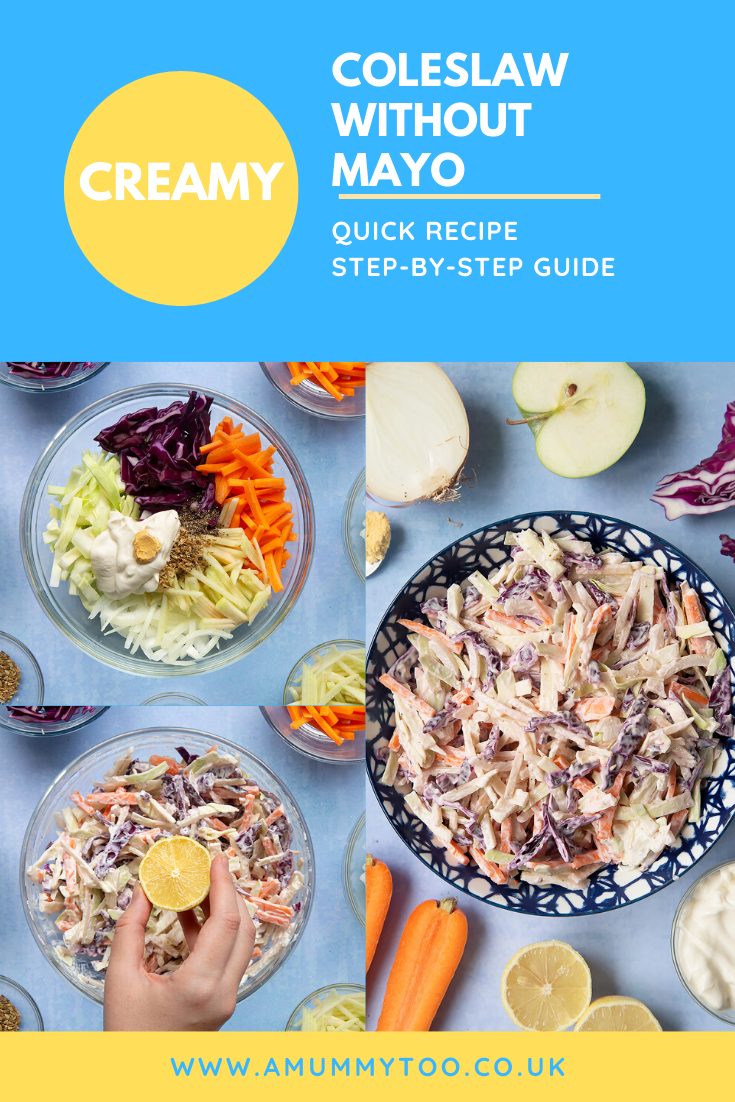
The carrot, cabbage, apple and onion offer a healthy and nutritious portion of veg, while the low fat crème fraîche really helps keep the calorie and fat content down, while still creating a creamy, delicious coleslaw.
For reference, here are some rough figures for what 125g (the amount this recipe calls for) would be of crème fraîche, mayo and their lower-fat alternatives.
- Low-fat crème fraîche: 210 kcal
- Crème fraîche: 375 kcal
- Mayonnaise: 900 kcal
- ‘Light’ mayonnaise: 385 kcal
Is this coleslaw without mayo keto-friendly?
This coleslaw is made mostly from naturally low-carb vegetables, so should be suitable for a keto-friendly diet.
Can I make coleslaw without mayo in a different quantity?
You can easily multiply this recipe up or down. Just click on the portion number on the recipe card below and then drag the slider up or down.
All of the ingredient quantities will change automatically.
What other ingredients or flavours can I use in my coleslaw?
The fennel and mustard in this recipe bring a gorgeous, aromatic edge to the creamy, crunchy coleslaw, but this recipe lends well to all sorts of flavours.
It’s really up to you as there’s plenty of room to experiment when it comes to the sweet or savoury side of the dish, along with how you prepare the ingredients.
For the savoury side of things, I really like added kohlrabi, a leafy green vegetable and fresh coriander. While for sweetness pineapple, raisins and pears all work really well.
If you don’t fancy using crème fraîche or mayo then a simple vinaigrette of apple cider vinegar, a little olive oil and a pinch of salt and pepper would work fantastically. Start with a small amount until you find a ratio that works for you then add small amounts of sugar or honey to taste to bring back a little sweetness.
How should I store homemade coleslaw?
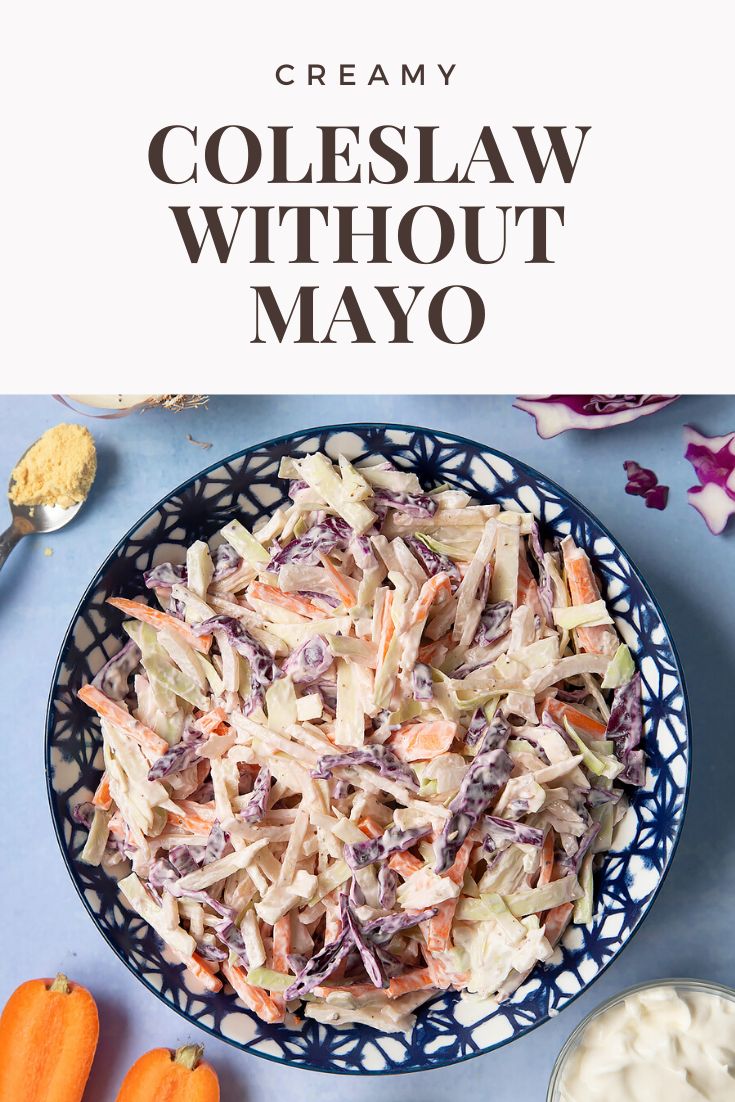
Don’t leave coleslaw out on the counter.
It’s important to always keep coleslaw refrigerated in an airtight container, and eat any being served within a couple of hours of taking it out of the fridge.
Once stored in the fridge, eat within 3 days of making.
How long does homemade coleslaw last?
When properly stored in the fridge it will last 3 days. If you forget to refrigerate for more than a couple of hours it’s best to throw it away.
Can I make this recipe ahead?
It’s best to make the whole recipe at once. You could make it the night before, store as above and then it’ll be ready to enjoy the next day!
Can coleslaw mix be frozen?
I wouldn’t recommend freezing coleslaw.
As this recipe uses crème fraîche, it is less likely to split when frozen like mayo does.
However, raw veg has a high water content and when it freezes, ice crystals form. This isn’t such an issue if you go on to cook the veg, but since coleslaw is enjoyed raw, it’s likely you’ll end up with soggy veg.
Can coleslaw be heated?
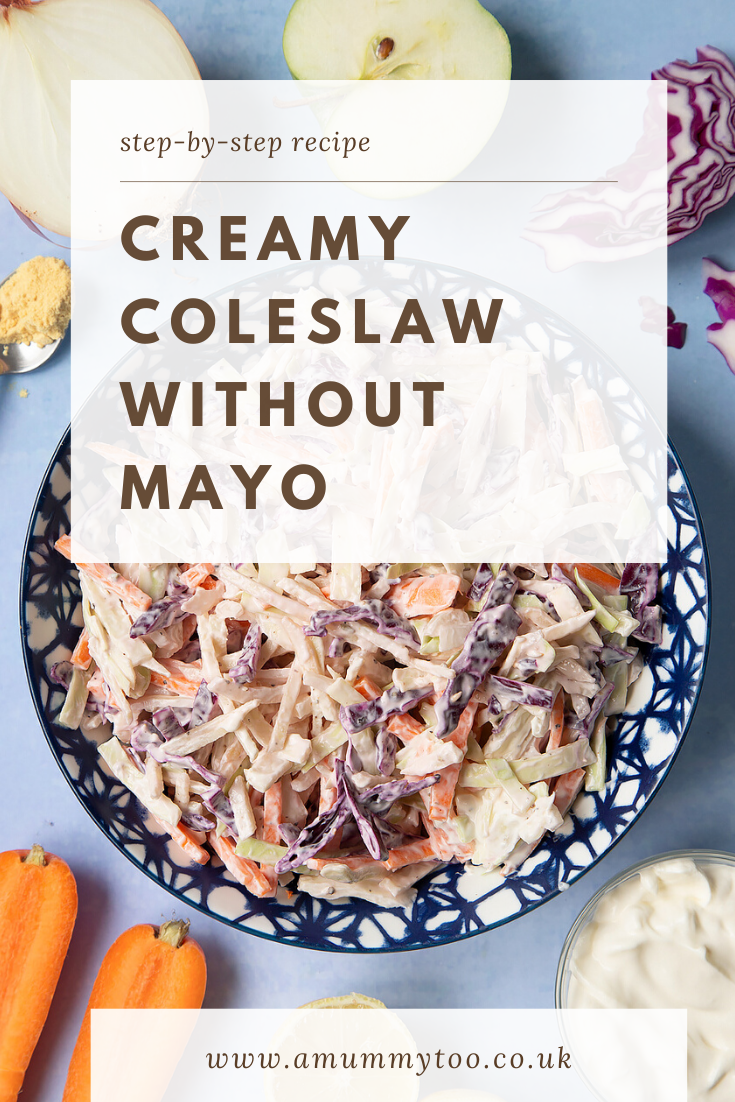
No. The ‘slaw’ in coleslaw comes from the Dutch word for ‘salad’, so it’s best to keep coleslaw nice and cold.
How can I shred cabbage for coleslaw?
My prefered method is:
- Cut the cabbage in half with a chef’s knife, starting at the top so the tough stem in the centre is halved.
- Remove the stem from both halves by cutting it out in a triangular wedge (you can store the two wedges in the refrigerator for up to three days and it’s very tasty when roasted).
- Put the halves on a chopping board, flat side down, and cut into thin strips.
- If the strips are too long you can cut them in half or thirds.
Can I make coleslaw with a food processor?
If your food processor has a fitting to make thin batons, then you could chop your veggies that way.
I wouldn’t recommend putting your veggies in a food processor with a standard blade fitting as it will chop everything too small.
Why did my coleslaw turn out claggy?
If your coleslaw is claggy, it might be because the crème fraîche is a little thick. This can vary from brand to brand.
Taste your coleslaw and try thinning it out with either milk or lemon juice, added just a drop at a time, stirring and tasting until you’re happy with the texture and flavour.
Why did my coleslaw turn out watery?
Some vegetables can start to release liquid, particularly if they are left at room temperature after being cut. Be sure to store your coleslaw in a sealed container in the fridge.
Can I make this coleslaw without apple?
Yes, you can leave out the apple, although I love it because it adds the perfect amount of sweetness.
Can you eat coleslaw when pregnant?
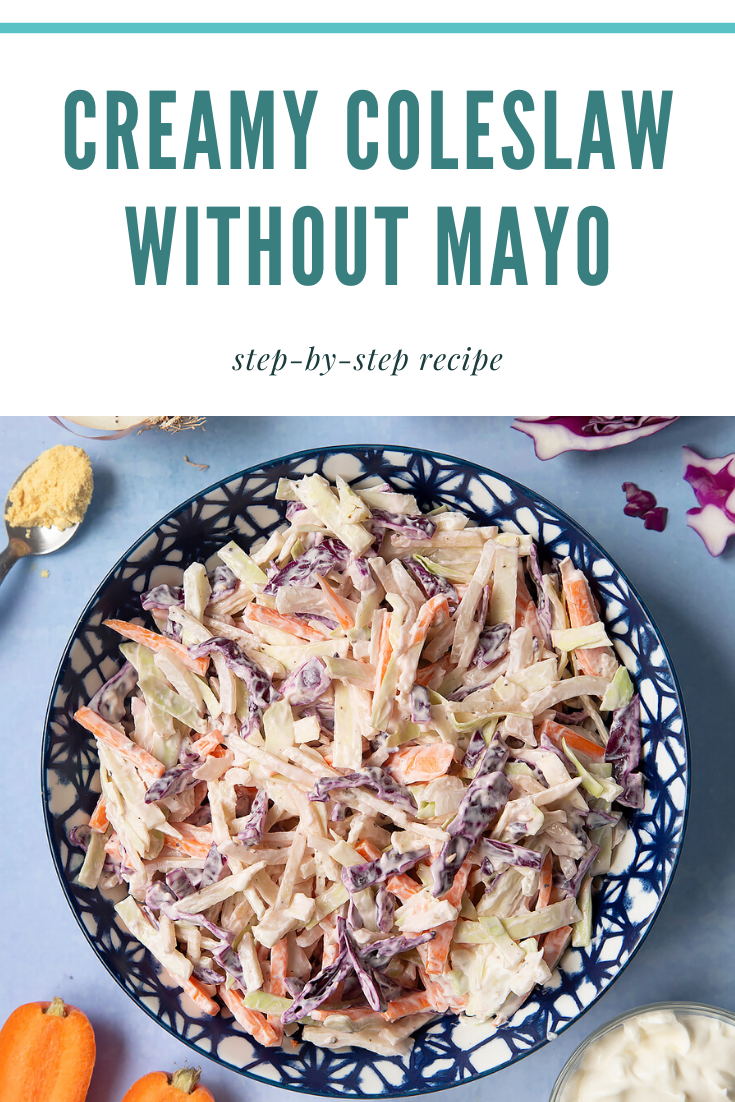
It depends on if you’re using crème fraîche (as this recipe calls for) or mayonnaise, and what part of the world you’re in.
If you’re using crème fraîche it’s very important to make sure it’s pasteurised (almost all milk-based dairy in the UK is, but it’s important to check).
If you’re using store-bought mayo make sure it’s pasteurised, or if you’re making your own mayo and in the UK, make sure that it uses Lion Code.
Here’s some advice from the NHS on the topic of eggs:
Some eggs are produced under a food safety standard called the British Lion Code of Practice. Eggs produced in this way have a logo stamped on their shell, showing a red lion.
Lion Code eggs are considered very low risk for salmonella, and safe for pregnant women to eat raw or partially cooked. So you can eat raw hen eggs or food containing lightly cooked hen eggs (such as soft boiled eggs, mousses, soufflés and fresh mayonnaise) provided that the eggs are produced under the Lion Code.
If you’re buying pre-made coleslaw, consider whether you are sure of the quality of the ingredients, if they’ve been washed and prepared correctly, if the dairy has been pasteurised, and if the coleslaw has been correctly stored in the refrigerator.
Note: these are general food safety considerations and you should always follow the advice of a health professional.
Where did coleslaw get its name?
The history of the word coleslaw is rather fun. It’s an 18th century Anglicisation, which is where a foreign word is modifying to make it easier to spell/pronounce in a new language.
In this case, its an Anglicisation of the Dutch word ‘koolsla’, where the ‘kool’ sound in Dutch becomes the English ‘cole’.
Going further back, the ‘kool’ comes from the Latin for cabbage, and the ‘sla’ is a contraction of ‘salade’, which translates perhaps unsurprisingly to ‘salad’.
Where does coleslaw originate from?
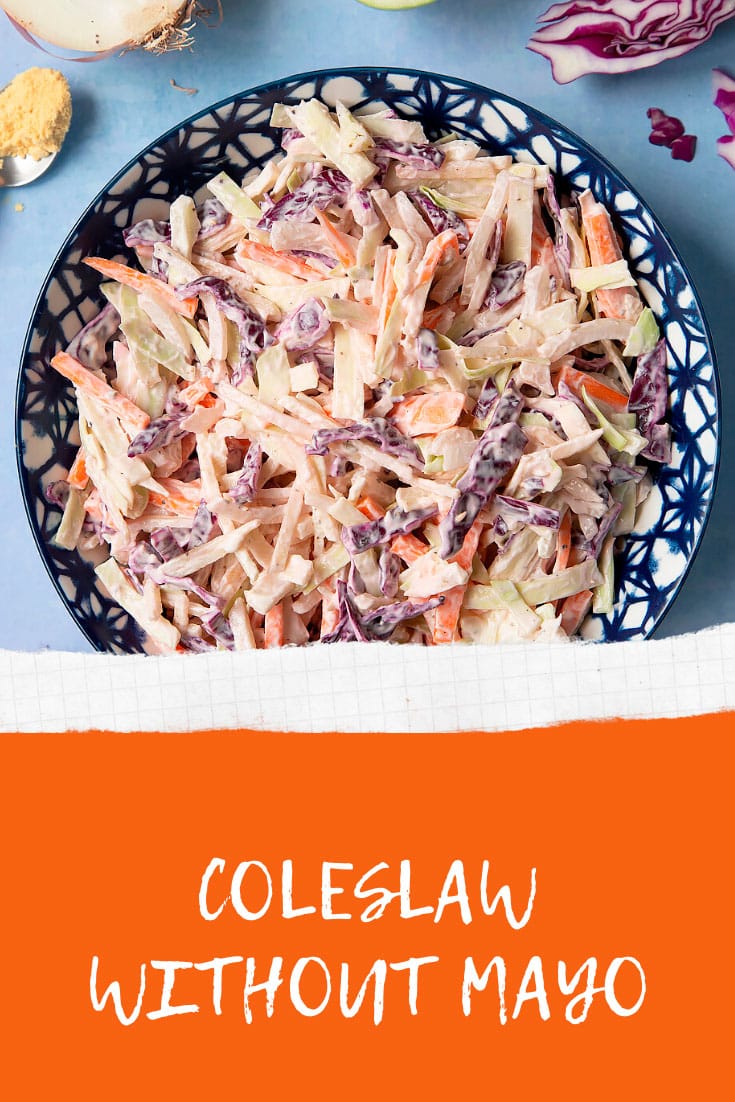
Coleslaw dates back to at least the 1770s. However, the now common Western version that includes mayo is more recent, since what we would class as mayonnaise has only been around since the 1850s.
What goes well with this recipe?
This mayo is perfect to add a good portion of veg to all sorts of meals.
How about this buttermilk fried chicken? Or these harissa falafels wraps.
Print this creamy coleslaw recipe
Creamy coleslaw without mayo
Ingredients
- 100 g (3.5 oz) white cabbage sliced
- 100 g (3.5 oz) red cabbage sliced
- 1 carrot cut into thin batons
- 1/4 onion peeled and sliced
- 1/2 apple peeled, cored and cut into thin batons
- 125 g (4.4 oz) low fat crème fraîche
- 1/2 tsp English mustard
- 1/2 tsp fennel seeds
- 1/2 lemon juice
- 1 pinch salt and pepper to taste
Instructions
-
Put the red cabbage, white cabbage, carrot, onion and apple in a mixing bowl.
-
Add the crème fraiche, mustard and fennel seeds and mix well.
-
Add the lemon juice and mix well.
-
Season to taste with salt and pepper.
Video
Notes
Nutrition
* Note: nutritional information is estimated, based on publicly available data. Nutrient values may vary from those published. Cuisines identify the primary region of inspiration for a dish.
Pin this creamy coleslaw without mayo
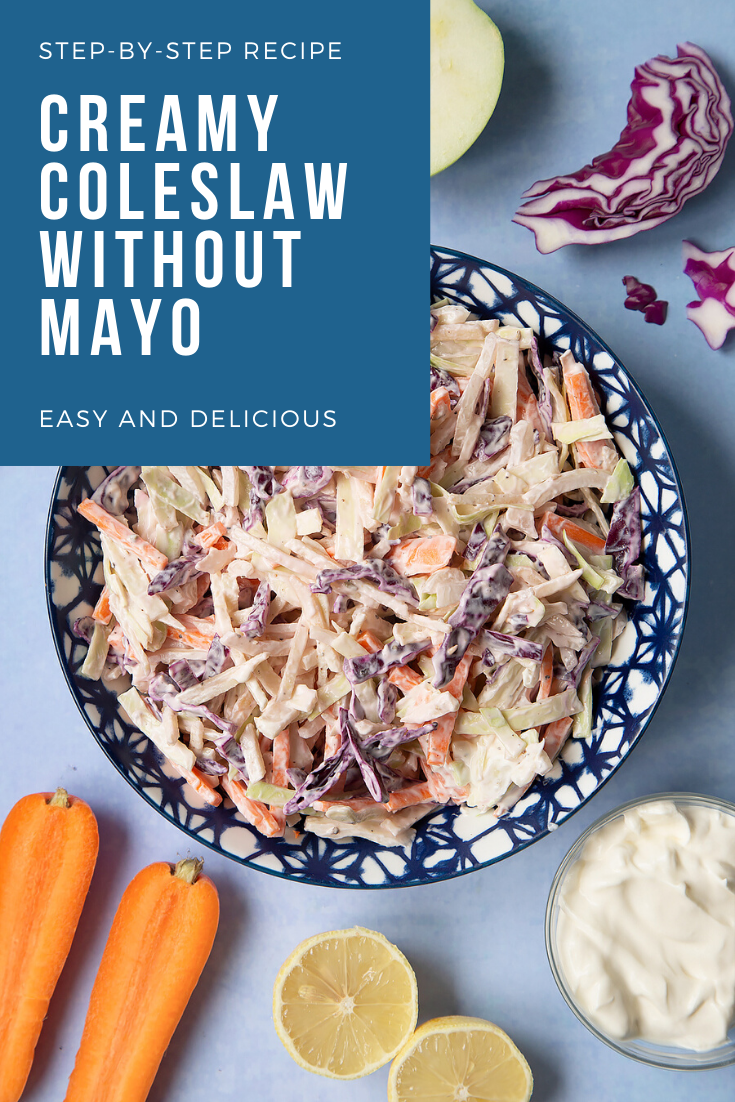
More veg-packed recipes
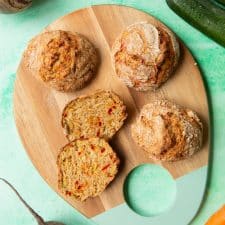
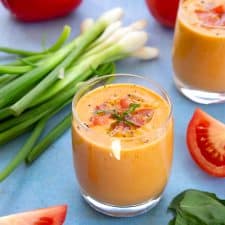
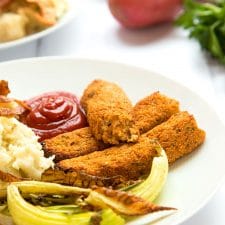
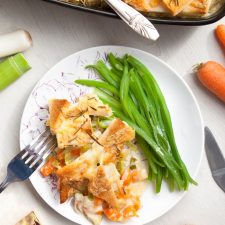

Get Your Kids to Eat Anything
My debut cookbook, Get Your Kids To Eat Anything is available now from all good bookshops!
It’s so much more than a cookbook, it’s a 5-Phase programme designed to take you through a meaningful, simple and sustainable journey to end fussy eating.

Since its release in March 2019 Get Your Kids To Eat Anything has been changing mealtimes in households across the country and has become an Amazon #1 best-seller.

